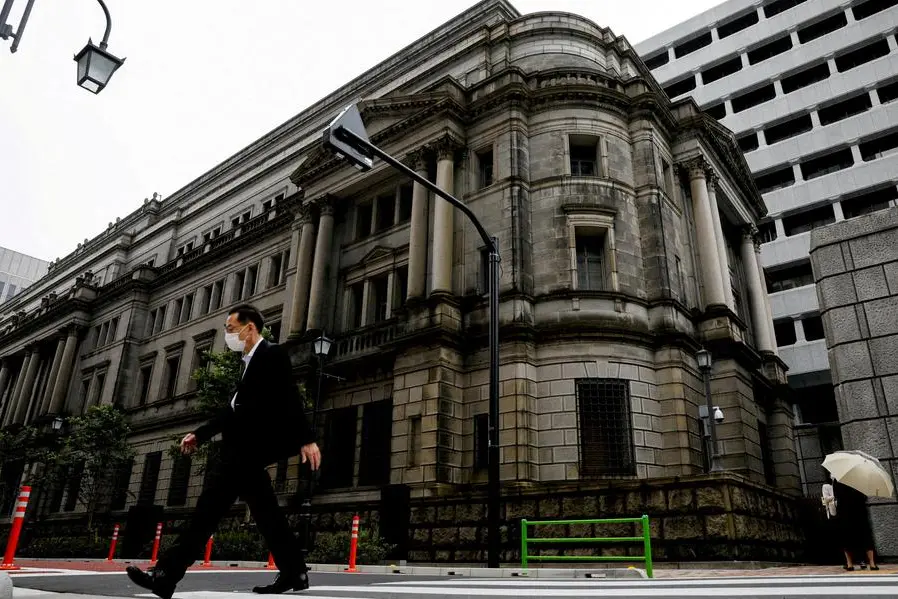PHOTO
TOKYO - Japan's central bank chief faces a key test of his communication skills at next week's monetary policy meeting, where he is expected to keep alive prospects of an end to negative rates while hosing down excitement that such a move is imminent.
Less than a year into the job, Bank of Japan Governor Kazuo Ueda has already wrong-footed markets twice in comments about the future of policy, most recently last week when bond yields and the yen surged on expectations of a near-term shift in rates.
It has been more than 16 years since Japan's last interest rate hike and financial markets have developed a hypersensitivity to any hint of an end to ultra-loose monetary settings, making it difficult for the BOJ to signal changes without triggering destabilising bond yield spikes.
However, as the economic case for an end to accommodative policy builds, the BOJ's priority now more than ever is to avoid surprising markets, three sources familiar with its thinking say. That means Ueda - unlike his predecessor who shocked markets with abrupt policy shifts - will try to drop some hints in advance.
"There's nothing good about surprising markets especially when central banks are weaning out stimulus," one of the sources said, a view echoed by another source.
That heightens the importance of what Ueda will say at his news conference after the BOJ's two-day meeting ending on Tuesday, where the board is seen making no major changes to its ultra-loose policy setting.
More than 80% of economists polled by Reuters in November expect the BOJ to end its negative rate policy next year with half of them predicting April as the most likely timing. Some see the chance of a policy shift in January.
Ueda faces a tricky balancing act. With inflation exceeding its 2% target for well over a year, the BOJ wants to keep alive market expectations of a near-term shift.
But the BOJ also needs to avoid any explicit language or hints that commit it to specific timing, which means keeping some ambiguity in its messaging.
The BOJ's current strategy is to emphasise the prerequisites for an exit, but hold off pre-announcing the expected timing, the sources said.
The delicate challenge of communicating without committing means Ueda could offer an array of ambiguous comments that risk being misinterpreted and causing unwanted market volatility, some analysts say.
A more transparent way of communicating would be to tweak or ditch a dovish forward guidance on policy that promises to ramp up stimulus as needed, though many in the BOJ rule out the option given uncertainty over the economic outlook, the sources said.
The BOJ's communication is also constrained by a disconnect between its dovish policy bias and hawkish forecasts predicting inflation will stay near its 2% target until early 2026.
Blaming the inflation overshoot on cost-push pressures, Ueda has stressed the need to wait for inflation to be driven more by domestic demand and stronger wage growth, in normalising policy.
But the governor himself acknowledged that this was a tough sell, telling parliament last week it was "hard to explain all this in a convincing way."
As well as creating market volatility, messaging missteps also undermine the effectiveness of central bank communication, an essential part of the policy transmission process.
Naomi Muguruma, senior market economist at Mitsubishi UFJ Morgan Stanley Securities, plans to focus on how Ueda describes progress the BOJ has made in scrutinising the price outlook.
"The key is how much the BOJ will try to signal the chance of a policy change in January," she said. "In any case, markets will probably remain volatile given the risk of Ueda's comments being taken out of context again."
(Reporting by Leika Kihara. Editing by Sam Holmes)























